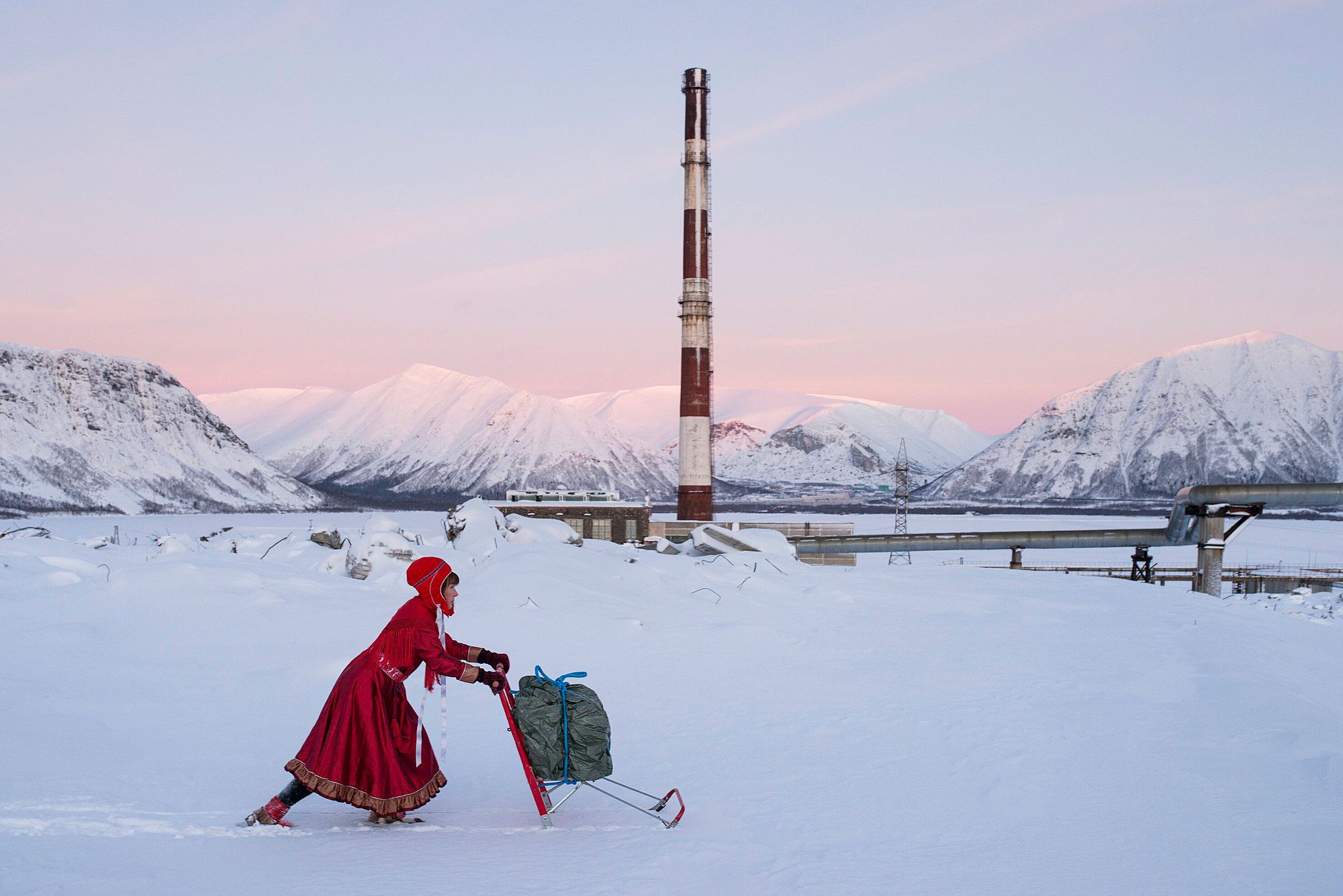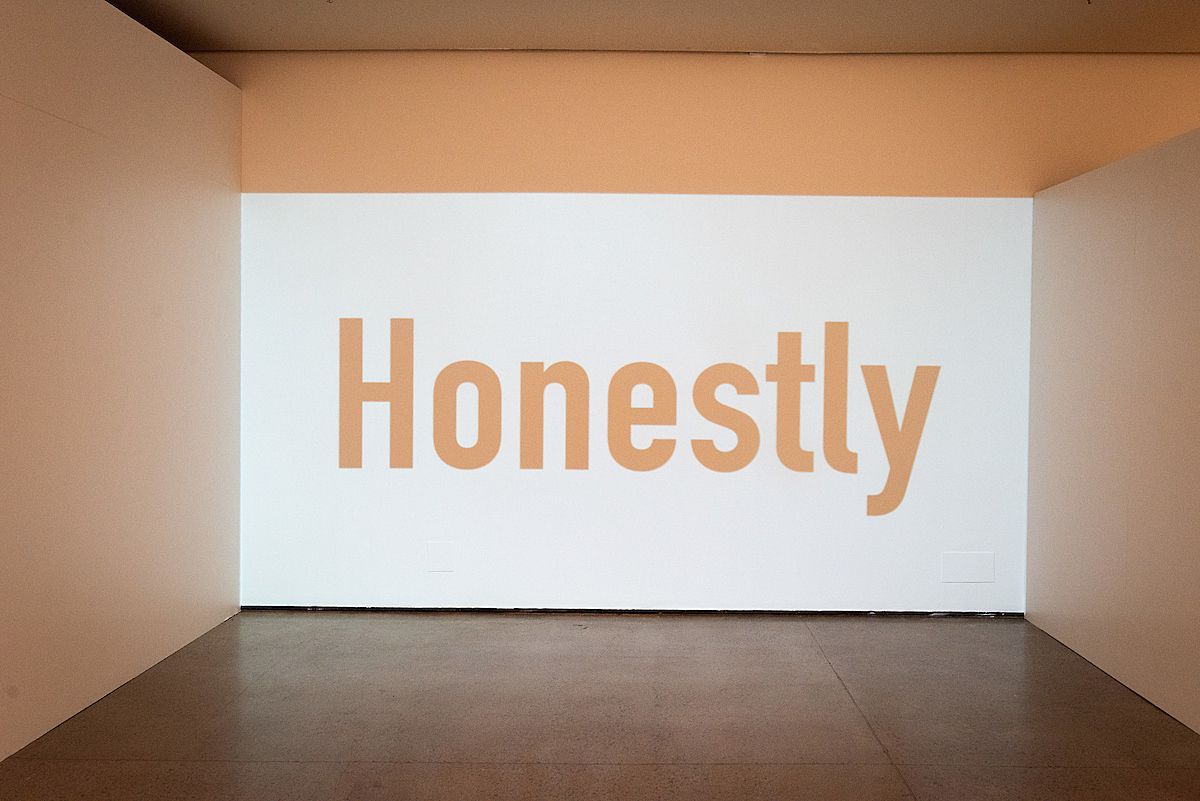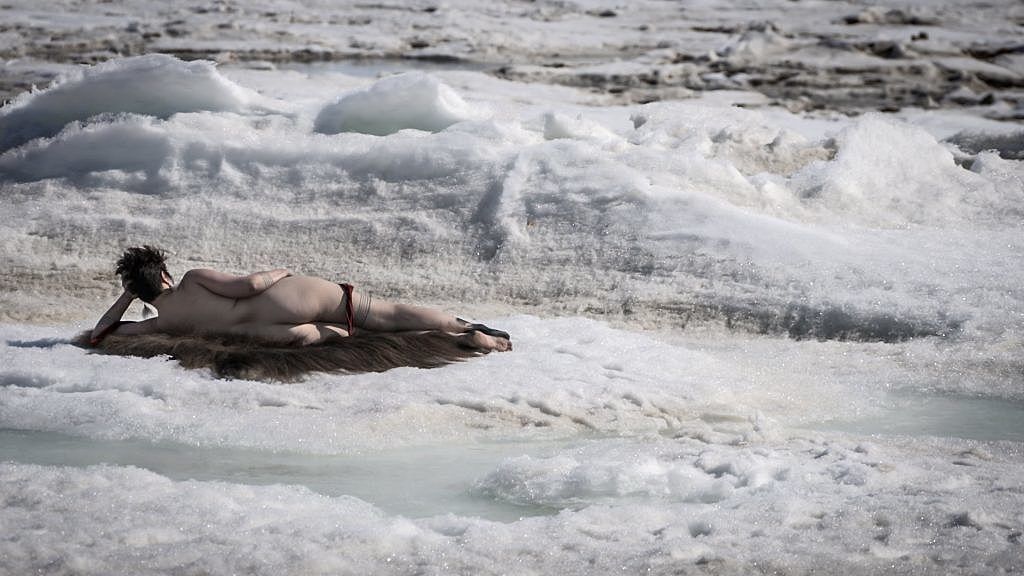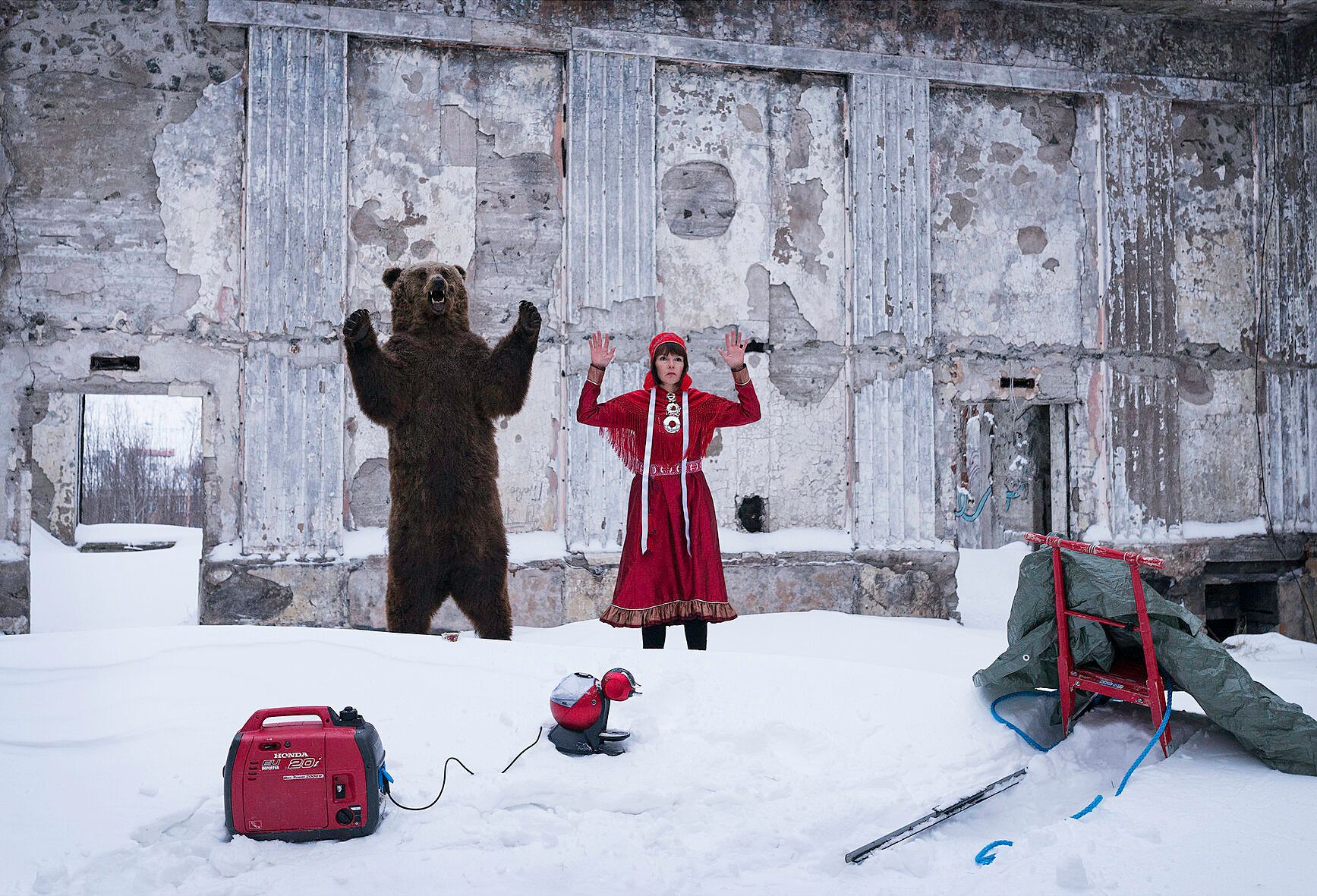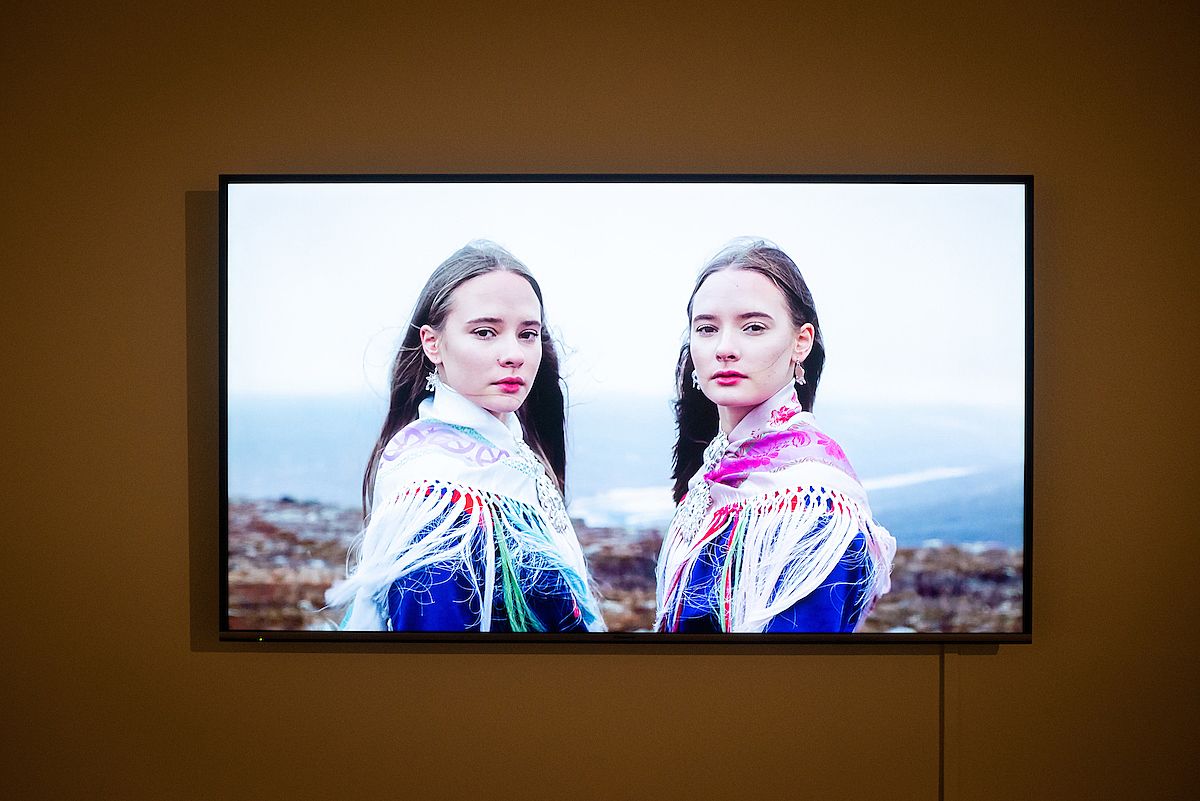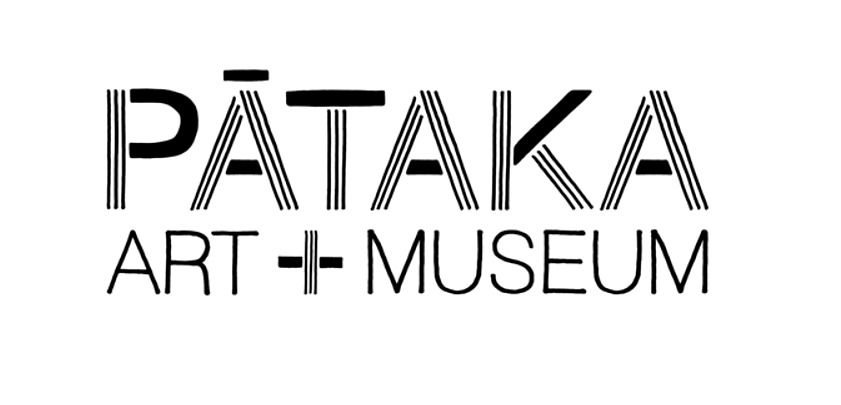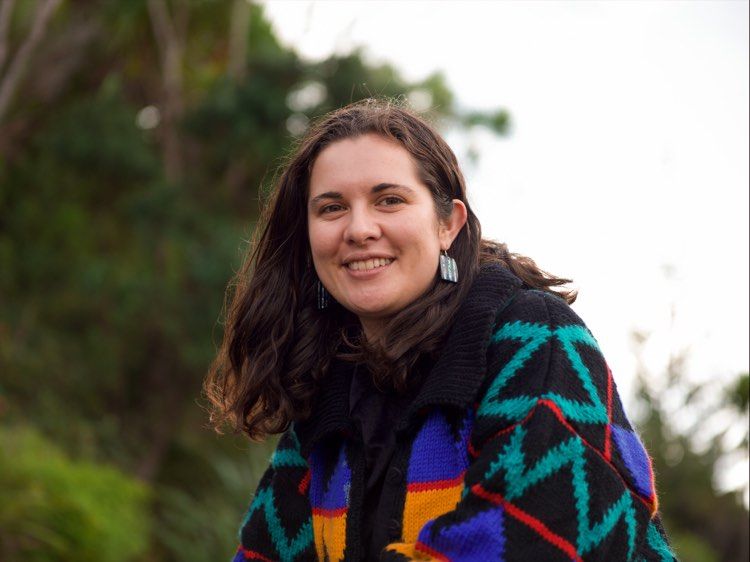My Home is in My Heart
In Among All These Tundras at Pātaka, the voices of Indigenous artists form a chorus that sings of their experiences of identity, language and home.
Among All These Tundras is an exhibition about the concerns of Indigenous artists from the circumpolar world. Situated throughout two main galleries at Pātaka, it includes various video works, photographs, sculpture and installations. The 12 artists exhibited here are from different Indigenous groups in the circumpolar region, including Canadian Inuit groups, Sámi from Norway and Finland, Kalaallit Inuits from Greenland and Alaskan Athabascans. Their voices form a chorus that sings of their experiences of indigeneity and their love for their identities, language and homes.
Tundras are vast, treeless landscapes endemic to the Arctic regions of Europe and North America, where the majority of the contributing artists are from. The works exhibited allow us to marvel at these landscapes and see them as they do – with reverence and love. The exhibition title comes from a poem by the Sámi writer Nils-Aslak Valkeapää ‘Ruoktu Váimuss (My home is in my heart)’:
How can I explain
that I can not live in just one place
and still live
when I live
among all these tundras
The poemis displayed across an entire gallery wall, translated from Sámi. It is the centrepiece of this exhibition, which represents Indigenous concerns from the Arctic but also worldwide, concerns familiar to Māori here in Aotearoa. These are land, language, sovereignty and the idea of homelands. They are reflected in various stanzas of the poem, which I keep coming back to as I walk around, each line becoming more meaningful and offering more insight as I go.
My home is in my heart
it migrates with me
You know it brother
you understand sister
but what do I say to strangers
who spread out everywhere
how shall I answer their questions
that come from a different world
The poem talks about migration and refers to the semi-nomadic lifestyle of many Sámi people, who often migrate at different times of the year. It talks about home being “all of this”, meaning all of the land they move across throughout the year. It also speaks to the difficulty of communicating a migratory way of living to an imposing ‘them’, who “come with papers / and say / this belongs to nobody / this is government land / everything belongs to the State”. The issue of Western ownership versus Indigenous stewardship is a tension felt in many of the artworks. A chief concern for these artists is the impossibility of communicating to imposing colonising forces – who believe in ownership over the land and its people – what it is to care for and deeply know the land.
How can I explain
that it moves with me
How can I explain
that others live there too
my brothers and sisters
What shall I say brother
what shall I say sister
Joar Nango, Sámi Shelters #1-5, 2009. Hand-knitted wool sweaters in ten different shades of colour. Courtesy of the artist. Photo: Elias Rodriguez / Mark Tantrum Photography
The first artwork that catches my eye is Sámi Shelters #1-5 by Joar Nango, a series of hand-knitted sweaters that are suspended from the ceiling. As an avid knitter, my attention is immediately drawn to them. Each one uses muted tones of blues, greens and greys to illustrate the different landscapes of the tundra. They float against the gallery wall, turning slowly. The sweaters depict five different lavvu (dwelling places) used to house Sámi people when they travel across their land. But the lavvu found here are not strictly traditional – they encompass both Sámi and Nordic elements, and are therefore simplified, colonised versions of Sámi architecture.
These works resonated with me. The skill required in knitting something so elaborate and with such clear detailing is amazing. The lavvu sit in front of ice, forests and bodies of water and are so intricately detailed that they almost appear to be painted. As the artist says, the sweaters “take the idea back to the very basics of architecture which is clothing, the first layer of shelter.” They align with the migratory nature of Sámi people, who take their homes with them. And, although these shelters are not strictly Sámi, the artist embraces their presence in his landscape, as important cultural signifiers of Sámi presence for local people.
Our ancestors kept fires on Allaorda
on Stuorajeaggis’s tufts
in Viiddescearru
Grandfather drowned in the fjord while fishing
Grandmother cut her shoe grass in Selgesrohtu
Father was born in Finjubakti in burning cold
And still they ask
where is your home
Carola Grahn, Look Who’s Talking, 2016. Courtesy of the artist. Photo: Elias Rodriguez / Mark Tantrum Photography
“Honestly, how shall I put this, I’m in a rather delicate situation.”
The text flashes large and confessional on the screen, capturing my attention. This piece, Look Who’s Talking,isby Carola Grahn, who is Sámi. She uses bold monochromatic text, with occasional illustrations projected on a loop, to reflect on being a white-passing Indigenous artist. The statements she uses are large, unapologetic, and demand to be read. She talks about her experiences of being at an Indigenous artist residency in Canada, and speaking with other artists about the issues that Indigenous peoples face worldwide. These conversations energise her, but are confronting. For the first time, she reflects on the whiteness of her skin and her subsequent proximity to white privilege, even as an Indigenous person:
Hearing them referring to all those stupid people as WHITE PEOPLE I finally looked at myself in the mirror and it struck me. My whole life I have never thought about the colour of my skin, (which is so f##king typical for white people) and I’m like WTF AM I ? WHITE ?
In the projected text, she writes about her struggles to connect with her uncle’s Indigenous knowledge, which she feels she doesn’t have access to because he won’t share it with her. These thoughts flash on the screen, “YOU KNOW NOTHING”, which she says is the way her uncles speak to each other. “If only I could find the sieidi,” she muses, referring to a sacred rock on the mountains near her uncle’s house that she’s been trying to locate all her life. In the face of cultural disconnection and confusion, she can only try and explore these issues by creating another piece of art.
They come to me
and show law books
Law books
that they have written themselves
This is the law and it applies to you too
See here
But I do not see brother
I do not see sister
I cannot
I say nothing
I only show them the tundra
Laakuluk Williamson Bathory, Timiga Nunalu, Sikulu (My Body, the Land and the Ice), 2016. Video by Jamie Griffiths, music by Chris Coleman, featuring vocals by Celina Kalluk. Courtesy of the artist
Laakkuluk Williamson Bathory is a Kalaaleq artist from the Inuit people of Greenland. Her video work Timiga Nunalu, Sikulu (My Body, the Land and the Ice) celebrates the land, by showing the sweeping and breath-taking landscape of the tundras. In it, she lies naked on an animal skin atop the tundra, boldly showing her Indigenous skin, tattooed and inked, against the icy landscape of her homeland.
This video makes me reflect on the many female nude paintings from the European art tradition and how the agency of women is often compromised by the men who paint them. Here, the artist represents herself, empowered and emboldened by her connection to the landscape around her. Her body and the land are displayed not as commodities to be exploited by the viewer, but as raw and remarkable works of art that defy any attempt to take advantage of them. She is staking a claim in the land, and also emphasising sovereignty over her own body.
I see your fjelds
the places we live
and hear my heart beat
all this is my home
and I carry it
within me
in my heart
On the back wall of the second gallery, two videos by Marja Helander, a Sámi artist and filmmaker, play on loop side by side. Maybe it’s the giant bear, or perhaps the rich fabrics the women wear, or the sweeping drone shots of landscapes that make them look like vast paintings, but I am instantly intrigued, and sit to watch both films from beginning to end. The first film, Dolastallat (To have a campfire),shows a Sámi woman pushing a sled through the mountains in Northern Russia. She wears traditional Sámi clothing, which shines red against the snowy landscape. Her journey takes her to an abandoned building filled with snow, where she sets up a generator and makes a cup of coffee. Behind her stands a large bear, to whom she offers the coffee when she’s done. The reverence of the situation is delightfully elevated by the artist’s sense of humour, as the bear, which is stuffed, doesn’t move to accept the coffee cup. The woman blinks, confused, before replacing the cup on its stool and moving to stand next to the bear, to assume the same stance as him.
Marja Helander, Dolastallat (To have a campfire), 2016. Courtesy of the artist
Highly revered in Sámi culture, the bear seems to represent a connection to tradition that the woman is searching for in an otherwise abandoned and lonely landscape. The tone – one of delight, humour and love – is moving. It’s really special to see Indigenous art with elements of fun and joy, while still commenting on the exploitation and destruction of Indigenous lands by outside forces.
I can hear it
when I close my eyes
I can hear it
I hear somewhere
deep within me
I hear the ground thunder
from thousands of hooves
I hear the reindeer herd running
or is it the noaidi drum
and the sacrificial stone
Helander’s second video, Eatnanvuloš Lottit (Birds in the Earth),won the Risto Jarva Prize at the Tampere Film Festival and was nominated for the Sundance Festival in 2019. The film shows two Indigenous girls, transformed into ballerinas, dancing through the many different landscapes of their Sámi homeland. Their grace and poise are set in disturbing contrast to some of the more devastating examples of land destruction and capitalist expansion in the places where they dance. The work invites the viewer to reflect on whose land they stand on and challenges us to be more aware of the histories and peoples who’ve traditionally inhabited our environments.
Marja Helander, Eatnanvuloš Lottit (Birds in the Earth), 2018. Courtesy of the artist. Photo: Elias Rodriguez / Mark Tantrum Photography
Parts of the video also depict the ballerinas pulling up artefacts from the snow, such as taxidermy animals, dolls and microwaves. The artist seems to be questioning the appropriateness of claims emphasising the ‘benefits’ of colonisation for Indigenous peoples. It does this by displaying the commodification and exploitation of natural resources that have resulted from industrialisation.
The ballerinas continue to dance, stretching their arms gracefully above their heads, twirling and gliding, in a gentle and entrancing act of activism. They cover up signs that say “Valtion Maata:State-owned land”, so that they read, more accurately, “Maata: land”. They journey across the countryside and through urban centres, treading lightly. And, at a few points, they are again transformed into young Indigenous women, wearing traditional Sámi clothing, dancing more free and expressive traditional dances, seeming to mimic the gestures of animals.
Somewhere deep within me
I can hear it
a voice calling
and the blood’s yoik I hear
In the depths
from the dawn of life
to the dusk of life
Among All These Tundras is a stunning and transportive exhibition. It takes us to an entirely unfamiliar landscape to encounter groups of people on the same journey of language revitalisation and cultural reclamation as Māori here in Aotearoa. Although the works celebrate what is, to me, a vast and foreign landscape, the heart of the show rings true. This makes me realise that there are so many opportunities for Indigenous people worldwide to connect and learn from one another.
Among All These Tundras gives me a sense of global connectedness and hope. That we are all on a journey to find what Dominican-American writer Junot Diaz calls ‘Decolonial Love’. This is, as he describes it, a love that can heal us of the pain of colonisation, and "the only kind of love that could liberate [us] from that horrible legacy of colonial violence." It also gives me hope that we can learn from one another through sharing our experiences, stories and art. The journey to re-indigenise institutions is long and difficult. But it is also done out of love. It is done because we, as Indigenous people, have been kaitiaki of our lands for centuries. And we are still here. And we will not leave.
All of this is my home
these fjords rivers lakes
the cold and sunlight and storms
The night and day of the fjelds
happiness and sorrow
sisters and brothers
All of this is my home
and I carry it in my heart
.
This piece is presented as part of a partnership with Pātaka. They cover the costs of paying our writers, while we retain all editorial control.
Feature Image: Marja Helander Dolastallat (To have a campfire), 2016.
